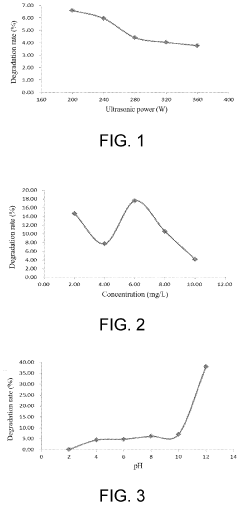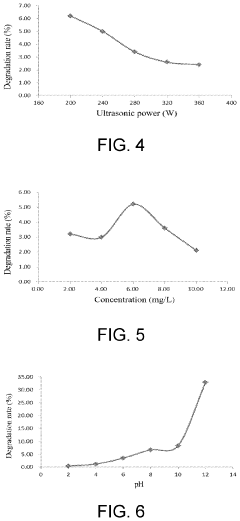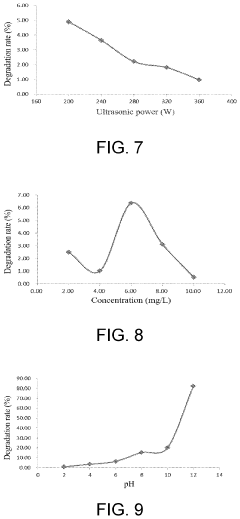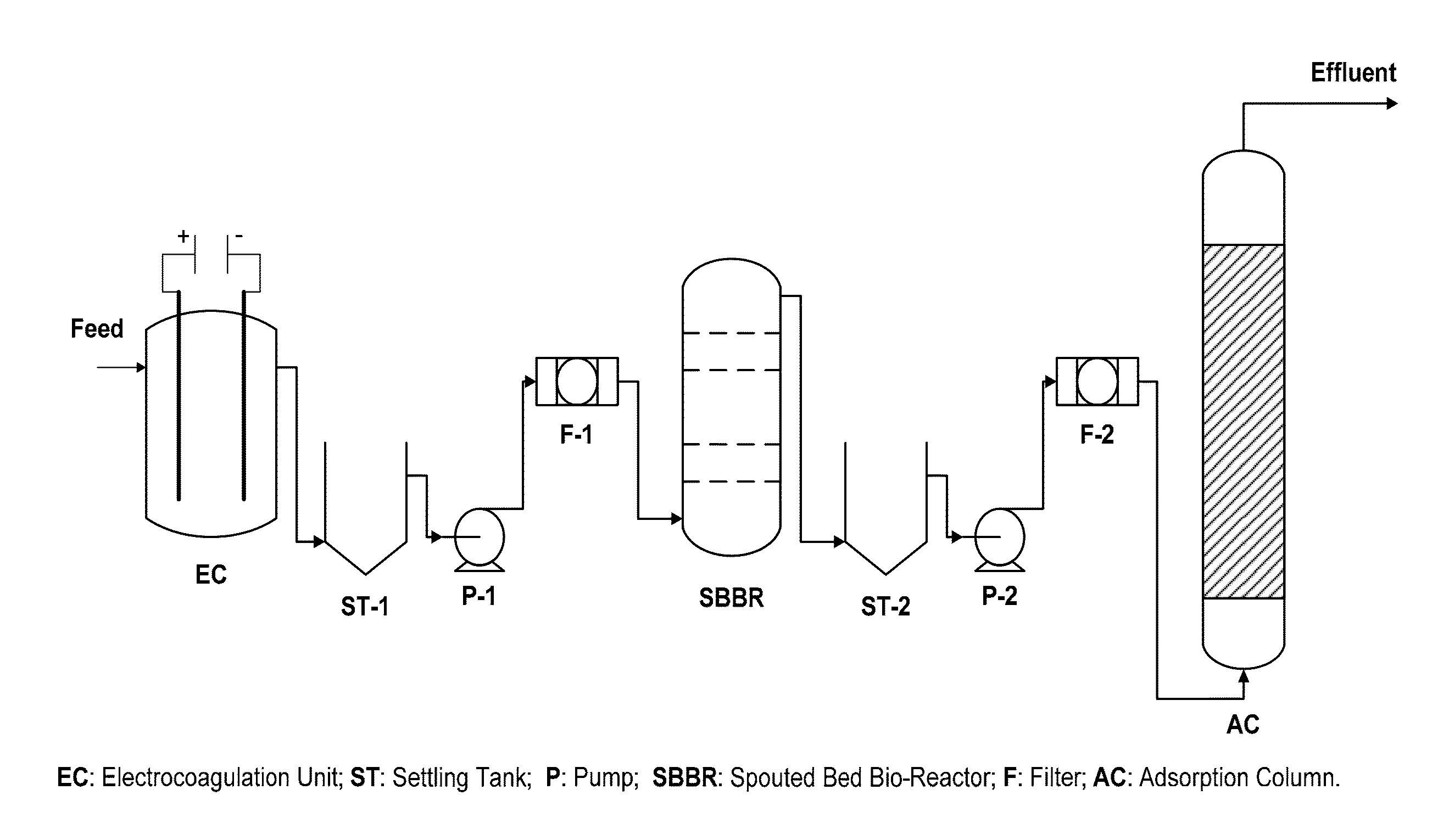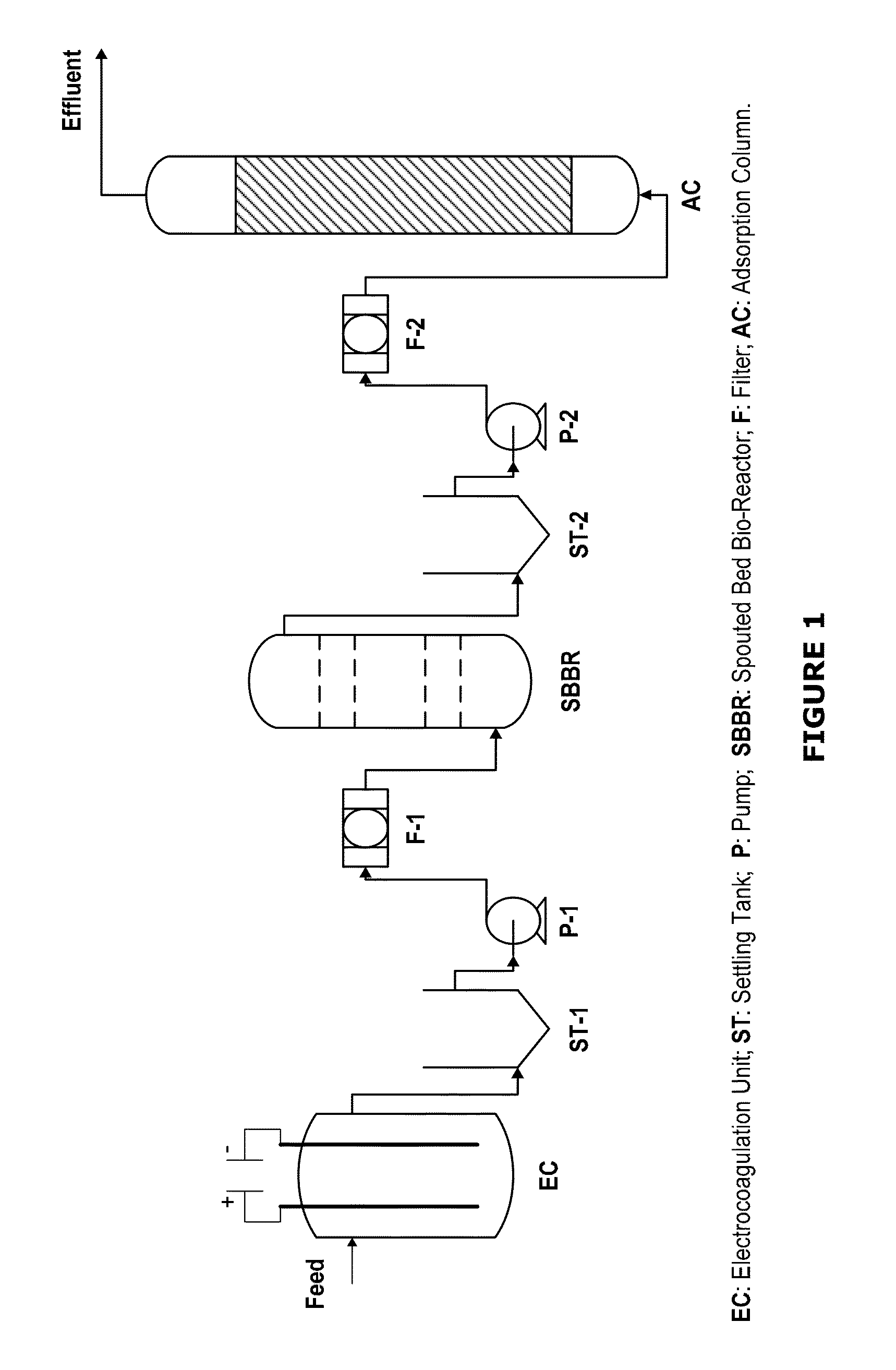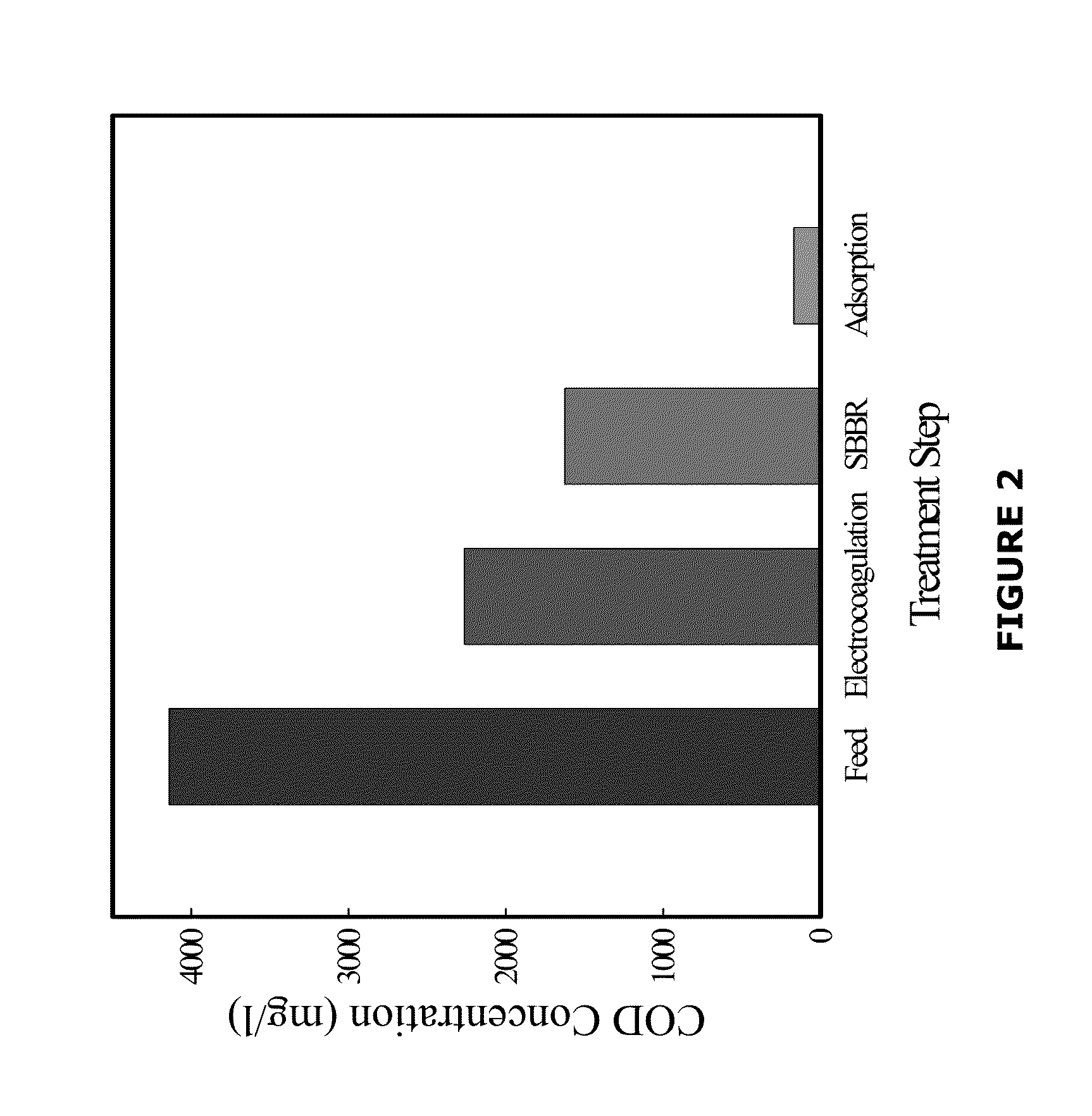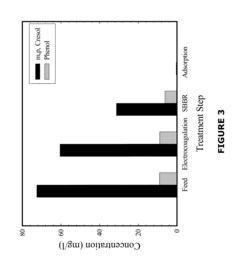How Carbolic Acid Affects Biodegradation Rates in Wastewater Treatment
JUL 22, 20259 MIN READ
Generate Your Research Report Instantly with AI Agent
Patsnap Eureka helps you evaluate technical feasibility & market potential.
Carbolic Acid in Wastewater: Background and Objectives
Carbolic acid, also known as phenol, has been a significant concern in wastewater treatment for decades. This organic compound, widely used in various industrial processes, poses substantial challenges to conventional biodegradation methods in wastewater treatment systems. The presence of carbolic acid in wastewater can significantly impact the efficiency of biological treatment processes, affecting the overall performance of treatment plants and potentially leading to environmental contamination if not properly addressed.
The historical context of carbolic acid in wastewater treatment dates back to the early 20th century when industrial effluents containing phenolic compounds began to pose serious environmental and health risks. As industries expanded, the release of carbolic acid into water bodies increased, prompting the development of specialized treatment techniques. Over the years, researchers and environmental engineers have made significant strides in understanding the behavior of carbolic acid in aqueous environments and its interactions with microorganisms responsible for biodegradation.
The evolution of wastewater treatment technologies has been closely tied to the challenges posed by recalcitrant compounds like carbolic acid. Traditional biological treatment methods, while effective for many organic pollutants, often struggle with the degradation of phenolic compounds due to their antimicrobial properties and potential toxicity to the microbial communities responsible for biodegradation. This has led to the exploration of advanced treatment technologies, including specialized biological processes, chemical oxidation methods, and hybrid systems combining multiple treatment approaches.
The primary objective of this technical research is to comprehensively examine how carbolic acid affects biodegradation rates in wastewater treatment systems. This investigation aims to elucidate the mechanisms by which carbolic acid interacts with microbial communities, influences enzymatic activities, and impacts the overall kinetics of biodegradation processes. By understanding these interactions, we can develop more effective strategies for the removal of carbolic acid from wastewater and improve the overall efficiency of treatment plants.
Furthermore, this research seeks to explore the potential for developing novel treatment technologies specifically tailored to address the challenges posed by carbolic acid. This includes investigating the use of specialized microbial consortia, engineered enzymes, and advanced oxidation processes that can effectively degrade phenolic compounds without compromising the overall treatment system's performance. The goal is to identify innovative solutions that can be integrated into existing wastewater treatment infrastructure, enhancing their capability to handle complex industrial effluents containing carbolic acid and similar recalcitrant pollutants.
The historical context of carbolic acid in wastewater treatment dates back to the early 20th century when industrial effluents containing phenolic compounds began to pose serious environmental and health risks. As industries expanded, the release of carbolic acid into water bodies increased, prompting the development of specialized treatment techniques. Over the years, researchers and environmental engineers have made significant strides in understanding the behavior of carbolic acid in aqueous environments and its interactions with microorganisms responsible for biodegradation.
The evolution of wastewater treatment technologies has been closely tied to the challenges posed by recalcitrant compounds like carbolic acid. Traditional biological treatment methods, while effective for many organic pollutants, often struggle with the degradation of phenolic compounds due to their antimicrobial properties and potential toxicity to the microbial communities responsible for biodegradation. This has led to the exploration of advanced treatment technologies, including specialized biological processes, chemical oxidation methods, and hybrid systems combining multiple treatment approaches.
The primary objective of this technical research is to comprehensively examine how carbolic acid affects biodegradation rates in wastewater treatment systems. This investigation aims to elucidate the mechanisms by which carbolic acid interacts with microbial communities, influences enzymatic activities, and impacts the overall kinetics of biodegradation processes. By understanding these interactions, we can develop more effective strategies for the removal of carbolic acid from wastewater and improve the overall efficiency of treatment plants.
Furthermore, this research seeks to explore the potential for developing novel treatment technologies specifically tailored to address the challenges posed by carbolic acid. This includes investigating the use of specialized microbial consortia, engineered enzymes, and advanced oxidation processes that can effectively degrade phenolic compounds without compromising the overall treatment system's performance. The goal is to identify innovative solutions that can be integrated into existing wastewater treatment infrastructure, enhancing their capability to handle complex industrial effluents containing carbolic acid and similar recalcitrant pollutants.
Market Analysis: Wastewater Treatment Demand
The global wastewater treatment market has been experiencing significant growth due to increasing urbanization, industrialization, and stringent environmental regulations. The demand for effective wastewater treatment solutions, including those addressing the impact of carbolic acid on biodegradation rates, is on the rise.
Developing countries are witnessing a surge in wastewater treatment demand as they grapple with rapid population growth and industrial expansion. China and India, in particular, are investing heavily in wastewater infrastructure to combat water pollution and meet the growing needs of their urban populations. These markets present substantial opportunities for innovative treatment technologies that can efficiently handle carbolic acid and other challenging contaminants.
In developed nations, the focus is shifting towards upgrading existing wastewater treatment facilities to improve efficiency and meet more stringent environmental standards. The European Union's Water Framework Directive and the United States' Clean Water Act continue to drive investments in advanced treatment technologies. This regulatory landscape creates a favorable market for solutions that can enhance biodegradation rates in the presence of carbolic acid and similar compounds.
The industrial sector remains a key driver of wastewater treatment demand, with chemical, pharmaceutical, and petrochemical industries generating significant volumes of carbolic acid-containing effluents. These industries are increasingly seeking cost-effective and sustainable treatment solutions to comply with regulations and minimize environmental impact.
Municipal wastewater treatment plants are also facing challenges in dealing with carbolic acid and other phenolic compounds entering the system from various sources. This has led to a growing demand for specialized treatment processes and technologies that can maintain high biodegradation rates despite the presence of these inhibitory substances.
The market for decentralized and on-site wastewater treatment systems is expanding, particularly in rural areas and developing regions. These systems require robust and adaptable treatment technologies that can handle varying contaminant loads, including carbolic acid, without compromising performance.
As water scarcity becomes a global concern, there is an increasing trend towards wastewater reuse and recycling. This trend is driving demand for advanced treatment technologies that can effectively remove carbolic acid and other recalcitrant compounds to produce high-quality reclaimed water suitable for various applications.
The wastewater treatment market is also seeing a shift towards more sustainable and energy-efficient solutions. Technologies that can maintain high biodegradation rates while minimizing energy consumption and chemical usage are gaining traction. This trend aligns well with research into how carbolic acid affects biodegradation rates, as optimizing these processes can lead to more efficient and environmentally friendly treatment systems.
Developing countries are witnessing a surge in wastewater treatment demand as they grapple with rapid population growth and industrial expansion. China and India, in particular, are investing heavily in wastewater infrastructure to combat water pollution and meet the growing needs of their urban populations. These markets present substantial opportunities for innovative treatment technologies that can efficiently handle carbolic acid and other challenging contaminants.
In developed nations, the focus is shifting towards upgrading existing wastewater treatment facilities to improve efficiency and meet more stringent environmental standards. The European Union's Water Framework Directive and the United States' Clean Water Act continue to drive investments in advanced treatment technologies. This regulatory landscape creates a favorable market for solutions that can enhance biodegradation rates in the presence of carbolic acid and similar compounds.
The industrial sector remains a key driver of wastewater treatment demand, with chemical, pharmaceutical, and petrochemical industries generating significant volumes of carbolic acid-containing effluents. These industries are increasingly seeking cost-effective and sustainable treatment solutions to comply with regulations and minimize environmental impact.
Municipal wastewater treatment plants are also facing challenges in dealing with carbolic acid and other phenolic compounds entering the system from various sources. This has led to a growing demand for specialized treatment processes and technologies that can maintain high biodegradation rates despite the presence of these inhibitory substances.
The market for decentralized and on-site wastewater treatment systems is expanding, particularly in rural areas and developing regions. These systems require robust and adaptable treatment technologies that can handle varying contaminant loads, including carbolic acid, without compromising performance.
As water scarcity becomes a global concern, there is an increasing trend towards wastewater reuse and recycling. This trend is driving demand for advanced treatment technologies that can effectively remove carbolic acid and other recalcitrant compounds to produce high-quality reclaimed water suitable for various applications.
The wastewater treatment market is also seeing a shift towards more sustainable and energy-efficient solutions. Technologies that can maintain high biodegradation rates while minimizing energy consumption and chemical usage are gaining traction. This trend aligns well with research into how carbolic acid affects biodegradation rates, as optimizing these processes can lead to more efficient and environmentally friendly treatment systems.
Current Challenges in Carbolic Acid Biodegradation
The biodegradation of carbolic acid, also known as phenol, in wastewater treatment faces several significant challenges. One of the primary obstacles is the inherent toxicity of carbolic acid to microorganisms. At high concentrations, it can inhibit or completely halt the growth and activity of bacteria responsible for biodegradation processes. This toxicity creates a paradoxical situation where the very compound that needs to be degraded also impedes the biological treatment process.
Another challenge is the variable concentration of carbolic acid in industrial wastewater streams. Fluctuations in phenol levels can make it difficult to maintain a stable and efficient biodegradation process. Sudden spikes in concentration may overwhelm the microbial population, leading to system failures and reduced treatment efficacy. Conversely, low concentrations may not provide sufficient substrate for the microorganisms to sustain their growth and metabolic activities.
The formation of toxic intermediates during carbolic acid biodegradation poses an additional challenge. Some breakdown products can be more recalcitrant or even more toxic than the parent compound. These intermediates may accumulate in the treatment system, further inhibiting microbial activity and potentially leading to secondary pollution if not properly managed.
Environmental factors such as temperature, pH, and dissolved oxygen levels significantly impact the biodegradation rates of carbolic acid. Maintaining optimal conditions for microbial activity across these parameters can be challenging, especially in large-scale wastewater treatment plants where conditions may vary across different treatment zones.
The presence of other pollutants in wastewater can also interfere with carbolic acid biodegradation. Competitive inhibition may occur when multiple substrates are present, potentially reducing the efficiency of phenol degradation. Additionally, some co-pollutants may have synergistic toxic effects, further complicating the treatment process.
Adaptation of microbial communities to carbolic acid is a time-dependent process. Developing a robust and specialized microbial population capable of efficiently degrading phenol can take considerable time. This adaptation period can result in prolonged start-up times for treatment systems and temporary decreases in treatment efficiency when operational conditions change.
Lastly, the potential for biofilm formation in treatment systems presents both opportunities and challenges. While biofilms can enhance the resilience of microbial communities to toxic shocks, they can also lead to clogging and reduced mass transfer efficiency in treatment units. Balancing the benefits of biofilm-mediated degradation with the operational challenges they present remains an ongoing area of research and optimization in carbolic acid biodegradation processes.
Another challenge is the variable concentration of carbolic acid in industrial wastewater streams. Fluctuations in phenol levels can make it difficult to maintain a stable and efficient biodegradation process. Sudden spikes in concentration may overwhelm the microbial population, leading to system failures and reduced treatment efficacy. Conversely, low concentrations may not provide sufficient substrate for the microorganisms to sustain their growth and metabolic activities.
The formation of toxic intermediates during carbolic acid biodegradation poses an additional challenge. Some breakdown products can be more recalcitrant or even more toxic than the parent compound. These intermediates may accumulate in the treatment system, further inhibiting microbial activity and potentially leading to secondary pollution if not properly managed.
Environmental factors such as temperature, pH, and dissolved oxygen levels significantly impact the biodegradation rates of carbolic acid. Maintaining optimal conditions for microbial activity across these parameters can be challenging, especially in large-scale wastewater treatment plants where conditions may vary across different treatment zones.
The presence of other pollutants in wastewater can also interfere with carbolic acid biodegradation. Competitive inhibition may occur when multiple substrates are present, potentially reducing the efficiency of phenol degradation. Additionally, some co-pollutants may have synergistic toxic effects, further complicating the treatment process.
Adaptation of microbial communities to carbolic acid is a time-dependent process. Developing a robust and specialized microbial population capable of efficiently degrading phenol can take considerable time. This adaptation period can result in prolonged start-up times for treatment systems and temporary decreases in treatment efficiency when operational conditions change.
Lastly, the potential for biofilm formation in treatment systems presents both opportunities and challenges. While biofilms can enhance the resilience of microbial communities to toxic shocks, they can also lead to clogging and reduced mass transfer efficiency in treatment units. Balancing the benefits of biofilm-mediated degradation with the operational challenges they present remains an ongoing area of research and optimization in carbolic acid biodegradation processes.
Existing Carbolic Acid Treatment Methods
01 Microbial degradation of carbolic acid
Certain microorganisms can effectively break down carbolic acid (phenol) through various metabolic pathways. These biodegradation processes involve enzymes that convert phenol into less harmful compounds, ultimately leading to its complete mineralization. The rate of biodegradation depends on factors such as microbial species, environmental conditions, and initial phenol concentration.- Microbial degradation of carbolic acid: Various microorganisms can be used to biodegrade carbolic acid (phenol) in contaminated environments. These microbes metabolize phenol as a carbon source, breaking it down into less harmful compounds. The rate of biodegradation depends on factors such as microbial species, environmental conditions, and initial phenol concentration.
- Enzymatic treatment for carbolic acid degradation: Enzymes produced by certain microorganisms can be isolated and used for the biodegradation of carbolic acid. These enzymes, such as phenol hydroxylase and catechol dioxygenase, catalyze the breakdown of phenol into less toxic intermediates. The use of enzymatic treatments can potentially increase the rate of carbolic acid biodegradation.
- Environmental factors affecting biodegradation rates: The rate of carbolic acid biodegradation is influenced by various environmental factors, including temperature, pH, oxygen availability, and the presence of other nutrients. Optimizing these conditions can significantly enhance the biodegradation rate and efficiency of phenol removal from contaminated sites.
- Bioaugmentation techniques for enhanced degradation: Bioaugmentation involves the addition of specific microorganisms or consortia known to degrade carbolic acid efficiently. This technique can be used to improve biodegradation rates in environments where native microorganisms are insufficient or poorly adapted to phenol degradation.
- Monitoring and analysis of carbolic acid biodegradation: Various analytical techniques and monitoring systems can be employed to assess the progress and rate of carbolic acid biodegradation. These methods include chromatography, spectrophotometry, and biosensors, which allow for the accurate measurement of phenol concentrations and the identification of degradation intermediates over time.
02 Environmental factors affecting biodegradation rates
The rate of carbolic acid biodegradation is influenced by various environmental factors, including temperature, pH, oxygen availability, and the presence of other organic compounds. Optimal conditions can significantly enhance the biodegradation process, while unfavorable conditions may slow it down or inhibit it altogether. Understanding these factors is crucial for developing effective bioremediation strategies.Expand Specific Solutions03 Engineered systems for enhanced biodegradation
Specialized bioreactor systems and treatment processes have been developed to accelerate carbolic acid biodegradation rates. These engineered systems often involve the use of immobilized microbial cultures, controlled environmental conditions, and optimized nutrient supply to maximize the efficiency of phenol degradation. Such systems can be applied in industrial wastewater treatment and environmental remediation projects.Expand Specific Solutions04 Genetic engineering for improved biodegradation
Research has focused on genetically modifying microorganisms to enhance their carbolic acid degradation capabilities. By introducing or modifying genes responsible for phenol-degrading enzymes, scientists aim to create more efficient and resilient strains for bioremediation purposes. These genetically engineered microorganisms have the potential to significantly increase biodegradation rates in various environmental conditions.Expand Specific Solutions05 Monitoring and analysis of biodegradation rates
Advanced analytical techniques and monitoring systems have been developed to accurately measure and track carbolic acid biodegradation rates in real-time. These methods include spectrophotometric analysis, high-performance liquid chromatography (HPLC), and biosensor-based approaches. Continuous monitoring allows for better understanding of degradation kinetics and optimization of bioremediation processes.Expand Specific Solutions
Key Players in Wastewater Treatment Industry
The competition landscape for carbolic acid's impact on biodegradation rates in wastewater treatment is evolving, with the industry in a growth phase. The market size is expanding due to increasing environmental regulations and demand for efficient wastewater treatment solutions. Technologically, the field is advancing rapidly, with varying levels of maturity among key players. Companies like Ecolab USA, Inc. and Black & Veatch Corp. are at the forefront, leveraging their extensive experience in water treatment. Academic institutions such as South China University of Technology and Tongji University are contributing significant research. Emerging players like Microvi Biotech, Inc. and BluMetric Environmental, Inc. are introducing innovative approaches, while established chemical companies like FUJIFILM Corp. and Henkel AG & Co. KGaA are applying their expertise to this niche area.
Ecolab USA, Inc.
Technical Solution: Ecolab has developed advanced wastewater treatment solutions that address the impact of carbolic acid on biodegradation rates. Their approach involves a multi-stage treatment process that combines chemical oxidation and biological treatment. The initial stage uses advanced oxidation processes (AOPs) to break down carbolic acid into less toxic compounds[1]. This is followed by a specialized biological treatment system using acclimated microorganisms capable of degrading the remaining phenolic compounds[2]. Ecolab's system incorporates real-time monitoring and adaptive control algorithms to optimize treatment conditions based on influent characteristics and biodegradation rates[3]. Additionally, they have implemented a novel bioaugmentation strategy, introducing specific bacterial strains that enhance the degradation of carbolic acid and its derivatives[4].
Strengths: Comprehensive approach combining chemical and biological treatments; adaptive control for optimized performance; specialized microbial strains for enhanced degradation. Weaknesses: Potentially high operational costs; may require frequent monitoring and adjustment.
Black & Veatch Corp.
Technical Solution: Black & Veatch has engineered an innovative wastewater treatment system specifically designed to address the challenges posed by carbolic acid in industrial effluents. Their approach utilizes a combination of advanced physical-chemical processes and biological treatment. The system begins with a pre-treatment phase employing activated carbon adsorption to reduce initial carbolic acid concentrations[1]. This is followed by a proprietary catalytic oxidation process that further breaks down recalcitrant phenolic compounds[2]. The biological treatment stage uses a specialized membrane bioreactor (MBR) system with carefully selected microbial consortia adapted to high phenol concentrations[3]. Black & Veatch's system also incorporates an innovative sludge management process that minimizes the production of phenol-contaminated biosolids, addressing a common challenge in treating carbolic acid-rich wastewaters[4].
Strengths: Comprehensive treatment approach; specialized MBR system for high phenol concentrations; innovative sludge management. Weaknesses: Potentially high capital costs; may require specialized expertise for operation and maintenance.
Innovative Approaches to Enhance Biodegradation
Method for degrading phenol in industrial wastewater with dual-frequency composite ultrasound
PatentInactiveUS20210053846A1
Innovation
- A dual-frequency composite ultrasound method is employed, combining probe-type and tank-type ultrasound, with specific power and pH adjustments to enhance cavitation and thermal effects, thereby improving phenol degradation efficiency.
Process And System For The Treatment Of Industrial And Petroleum Refinery Wastewater
PatentInactiveUS20130206688A1
Innovation
- An integrated system comprising an electrocoagulation reactor, a Spouted Bed Bioreactor with bacteria immobilized in polyvinyl alcohol, and an adsorption column packed with granular activated carbon derived from date pits, arranged in series to treat refinery wastewater, effectively reducing COD and phenolic compounds.
Environmental Regulations on Wastewater Discharge
Environmental regulations on wastewater discharge have become increasingly stringent in recent years, reflecting growing concerns about water pollution and its impact on ecosystems and human health. These regulations typically set limits on the concentration of various pollutants, including carbolic acid (phenol), in wastewater effluents. The presence of carbolic acid in wastewater can significantly affect biodegradation rates, making it a critical parameter in treatment processes.
Many countries have established comprehensive frameworks for regulating wastewater discharge. In the United States, the Clean Water Act serves as the primary federal law governing water pollution. The Environmental Protection Agency (EPA) sets effluent guidelines for different industries, specifying the maximum allowable levels of pollutants in discharged wastewater. For phenolic compounds, including carbolic acid, the EPA has set strict limits due to their toxicity and persistence in the environment.
The European Union has implemented the Water Framework Directive, which aims to achieve good ecological and chemical status for all water bodies. This directive includes specific provisions for priority substances, among which phenolic compounds are listed. Member states are required to progressively reduce pollution from these substances and phase out emissions, discharges, and losses of priority hazardous substances.
In developing countries, regulations are evolving rapidly as awareness of environmental issues grows. China, for instance, has introduced the Water Pollution Prevention and Control Law, which sets standards for wastewater discharge and imposes penalties for non-compliance. The law specifically addresses industrial wastewater containing toxic substances like carbolic acid.
Regulatory bodies often require wastewater treatment facilities to implement advanced treatment technologies to meet discharge standards. These may include biological treatment processes, advanced oxidation, and membrane filtration. The choice of treatment method is heavily influenced by the presence of compounds like carbolic acid, which can inhibit microbial activity and reduce biodegradation rates.
Monitoring and enforcement are crucial aspects of wastewater discharge regulations. Many jurisdictions mandate regular testing and reporting of effluent quality. Advanced analytical techniques, such as gas chromatography-mass spectrometry, are employed to detect and quantify trace amounts of carbolic acid and other pollutants in wastewater samples.
As scientific understanding of the environmental impacts of various pollutants improves, regulations continue to evolve. There is a trend towards more holistic approaches that consider the cumulative effects of multiple pollutants and the overall health of receiving water bodies. This may lead to even stricter controls on substances like carbolic acid in the future, potentially driving innovation in wastewater treatment technologies and industrial processes to minimize its presence in effluents.
Many countries have established comprehensive frameworks for regulating wastewater discharge. In the United States, the Clean Water Act serves as the primary federal law governing water pollution. The Environmental Protection Agency (EPA) sets effluent guidelines for different industries, specifying the maximum allowable levels of pollutants in discharged wastewater. For phenolic compounds, including carbolic acid, the EPA has set strict limits due to their toxicity and persistence in the environment.
The European Union has implemented the Water Framework Directive, which aims to achieve good ecological and chemical status for all water bodies. This directive includes specific provisions for priority substances, among which phenolic compounds are listed. Member states are required to progressively reduce pollution from these substances and phase out emissions, discharges, and losses of priority hazardous substances.
In developing countries, regulations are evolving rapidly as awareness of environmental issues grows. China, for instance, has introduced the Water Pollution Prevention and Control Law, which sets standards for wastewater discharge and imposes penalties for non-compliance. The law specifically addresses industrial wastewater containing toxic substances like carbolic acid.
Regulatory bodies often require wastewater treatment facilities to implement advanced treatment technologies to meet discharge standards. These may include biological treatment processes, advanced oxidation, and membrane filtration. The choice of treatment method is heavily influenced by the presence of compounds like carbolic acid, which can inhibit microbial activity and reduce biodegradation rates.
Monitoring and enforcement are crucial aspects of wastewater discharge regulations. Many jurisdictions mandate regular testing and reporting of effluent quality. Advanced analytical techniques, such as gas chromatography-mass spectrometry, are employed to detect and quantify trace amounts of carbolic acid and other pollutants in wastewater samples.
As scientific understanding of the environmental impacts of various pollutants improves, regulations continue to evolve. There is a trend towards more holistic approaches that consider the cumulative effects of multiple pollutants and the overall health of receiving water bodies. This may lead to even stricter controls on substances like carbolic acid in the future, potentially driving innovation in wastewater treatment technologies and industrial processes to minimize its presence in effluents.
Economic Impact of Improved Biodegradation Rates
The economic impact of improved biodegradation rates in wastewater treatment, particularly concerning the effects of carbolic acid, can be substantial and far-reaching. Enhanced biodegradation rates lead to more efficient wastewater treatment processes, which in turn result in significant cost savings for treatment facilities and municipalities.
One of the primary economic benefits is the reduction in operational costs. Improved biodegradation rates mean that wastewater can be processed more quickly, allowing treatment plants to handle larger volumes of water in shorter periods. This increased efficiency translates to lower energy consumption, reduced chemical usage, and decreased labor costs. For example, a study conducted on a mid-sized wastewater treatment plant showed that a 20% improvement in biodegradation rates resulted in a 15% reduction in overall operational expenses.
The enhanced treatment efficiency also leads to a decrease in the physical footprint required for wastewater treatment facilities. This reduction in land use can result in considerable savings, especially in urban areas where real estate prices are high. Moreover, the ability to process more wastewater in existing facilities reduces the need for expansion or construction of new plants, saving millions in capital expenditures.
Improved biodegradation rates also contribute to better effluent quality, which has indirect economic benefits. Cleaner discharged water reduces the environmental impact on receiving water bodies, potentially lowering costs associated with environmental remediation and regulatory compliance. In some cases, this can lead to reduced fines and penalties for non-compliance with environmental regulations.
Furthermore, the economic impact extends beyond the treatment facilities themselves. Industries that rely on clean water sources, such as agriculture, fishing, and tourism, benefit from improved water quality. A study by the World Bank estimated that poor water quality can lower economic growth in affected regions by up to one-third due to impacts on health, agriculture, and ecosystems.
The development of more effective treatment technologies, including those that enhance biodegradation rates in the presence of carbolic acid, can also stimulate economic growth in the environmental technology sector. This creates opportunities for innovation, job creation, and export of technologies to global markets. The global water and wastewater treatment market is projected to reach $211 billion by 2025, with a significant portion attributed to advancements in biological treatment processes.
In conclusion, the economic impact of improved biodegradation rates in wastewater treatment is multifaceted, affecting not only the direct costs of water treatment but also broader economic and environmental factors. As research continues to enhance our understanding of how carbolic acid affects biodegradation rates, the potential for further economic benefits in this sector remains significant.
One of the primary economic benefits is the reduction in operational costs. Improved biodegradation rates mean that wastewater can be processed more quickly, allowing treatment plants to handle larger volumes of water in shorter periods. This increased efficiency translates to lower energy consumption, reduced chemical usage, and decreased labor costs. For example, a study conducted on a mid-sized wastewater treatment plant showed that a 20% improvement in biodegradation rates resulted in a 15% reduction in overall operational expenses.
The enhanced treatment efficiency also leads to a decrease in the physical footprint required for wastewater treatment facilities. This reduction in land use can result in considerable savings, especially in urban areas where real estate prices are high. Moreover, the ability to process more wastewater in existing facilities reduces the need for expansion or construction of new plants, saving millions in capital expenditures.
Improved biodegradation rates also contribute to better effluent quality, which has indirect economic benefits. Cleaner discharged water reduces the environmental impact on receiving water bodies, potentially lowering costs associated with environmental remediation and regulatory compliance. In some cases, this can lead to reduced fines and penalties for non-compliance with environmental regulations.
Furthermore, the economic impact extends beyond the treatment facilities themselves. Industries that rely on clean water sources, such as agriculture, fishing, and tourism, benefit from improved water quality. A study by the World Bank estimated that poor water quality can lower economic growth in affected regions by up to one-third due to impacts on health, agriculture, and ecosystems.
The development of more effective treatment technologies, including those that enhance biodegradation rates in the presence of carbolic acid, can also stimulate economic growth in the environmental technology sector. This creates opportunities for innovation, job creation, and export of technologies to global markets. The global water and wastewater treatment market is projected to reach $211 billion by 2025, with a significant portion attributed to advancements in biological treatment processes.
In conclusion, the economic impact of improved biodegradation rates in wastewater treatment is multifaceted, affecting not only the direct costs of water treatment but also broader economic and environmental factors. As research continues to enhance our understanding of how carbolic acid affects biodegradation rates, the potential for further economic benefits in this sector remains significant.
Unlock deeper insights with Patsnap Eureka Quick Research — get a full tech report to explore trends and direct your research. Try now!
Generate Your Research Report Instantly with AI Agent
Supercharge your innovation with Patsnap Eureka AI Agent Platform!
